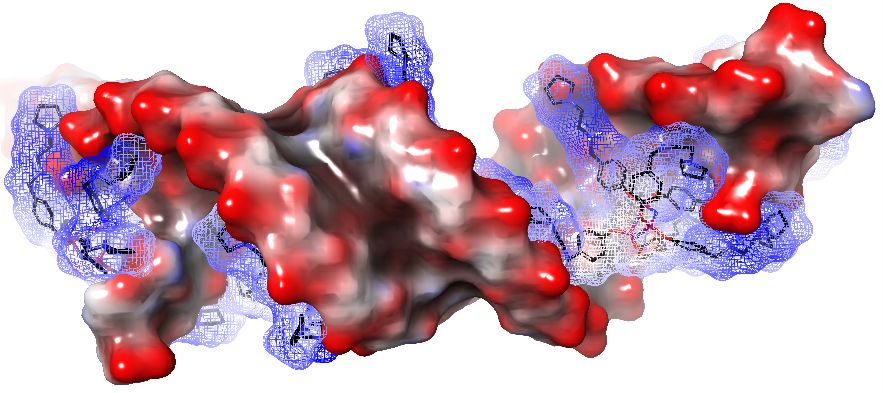
Anke Steinmetz
Sanofi R&D, Chemical Manufacturing & Controls Synthetics/Biosyntheses Technology
Department Vitry/Enzyme Biology, Centre de Recherche Vitry, France

Sanofi R&D, Chemical Manufacturing & Controls Synthetics/Biosyntheses Technology
Department Vitry/Enzyme Biology, Centre de Recherche Vitry, France
Novel phosphorus dendrimers were developed as carriers for intracellular delivery of siRNA [1]. The understanding of their structural properties and interactions with siRNA was enhanced by molecular modeling applied to both, selected phosphorus dendrimers and target siRNA. The study evinced dendrimers of high conformational mobility and suggested that variation in protonation may modify shape and size as well as hydration of branches and solvent access to core. Conformational diversity was observed for the 5’- and 3’-ends of siRNA while its core had stable structure. Docking of phosphorus dendrimers indicated binding to the major groove as primary mode of interaction (Figure). Divergence of affinity and protection against RNAse-mediated degradation could be explained by differences in cyclization degree and conformational flexibility resulting in specific binding capabilities. Comparison to experimental structures of small molecules or proteins complexed with double-stranded RNA showed that phosphorus dendrimers unite binding capacities of both in a specific and unprecedented manner. Thus, they thereby open an entire field to RNA-implicating drug discovery and delivery [1].
Figure: Phosphorus dendrimers binding to siRNA.

Acknowledgments: Anke Steinmetz much appreciates Serge Mignani and Jean-Pierre Majoral for the long-standing collaboration in this fascinating field of drug discovery and delivery.
References:
[1] Rodríguez-Clemente, I. et al.; manuscript in preparation
DISCLAIMER: Funding for this conference was made possible in part by FCT (Base Fund UIDB/00674/2020), ARDITI and SRECT. Views expressed in written conference materials or in publications, as well as those expressed by speakers and moderators, do not necessarily reflect CQM’s official policies nor does any mention of trade names, commercial practices or organizations imply endorsement by the University of Madeira and Centro de Química da Madeira.
All rights reserved © 2023-2024 Centro de Química da Madeira Webdesign: Énio Freitas